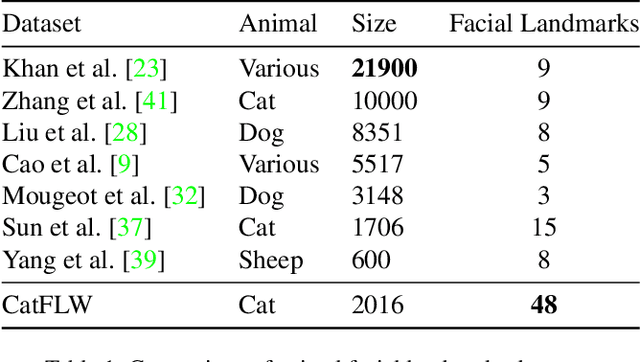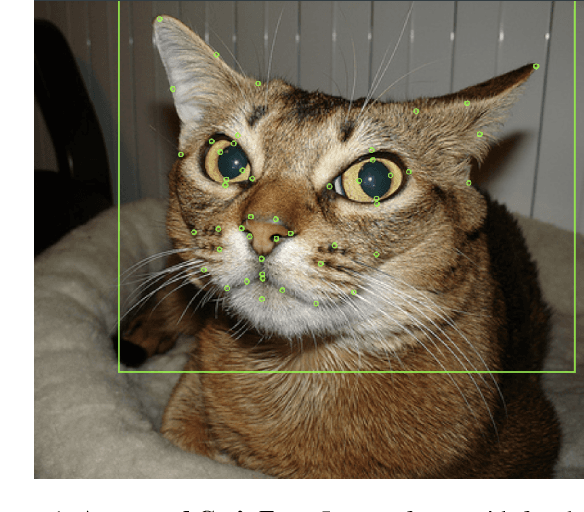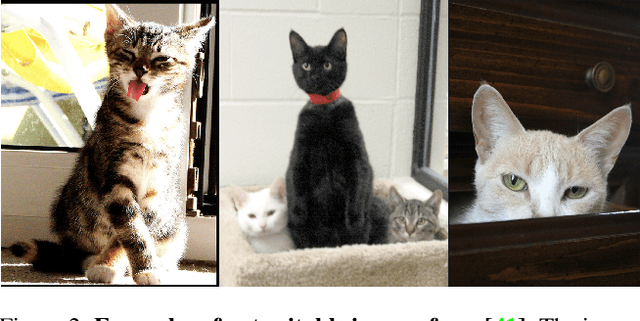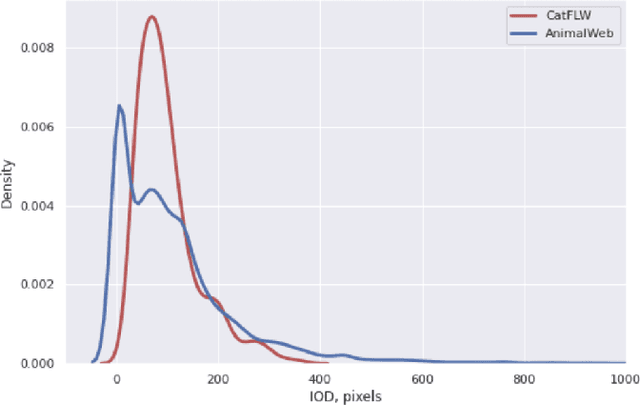George Martvel
Semantic Style Transfer for Enhancing Animal Facial Landmark Detection
May 08, 2025Abstract:Neural Style Transfer (NST) is a technique for applying the visual characteristics of one image onto another while preserving structural content. Traditionally used for artistic transformations, NST has recently been adapted, e.g., for domain adaptation and data augmentation. This study investigates the use of this technique for enhancing animal facial landmark detectors training. As a case study, we use a recently introduced Ensemble Landmark Detector for 48 anatomical cat facial landmarks and the CatFLW dataset it was trained on, making three main contributions. First, we demonstrate that applying style transfer to cropped facial images rather than full-body images enhances structural consistency, improving the quality of generated images. Secondly, replacing training images with style-transferred versions raised challenges of annotation misalignment, but Supervised Style Transfer (SST) - which selects style sources based on landmark accuracy - retained up to 98% of baseline accuracy. Finally, augmenting the dataset with style-transferred images further improved robustness, outperforming traditional augmentation methods. These findings establish semantic style transfer as an effective augmentation strategy for enhancing the performance of facial landmark detection models for animals and beyond. While this study focuses on cat facial landmarks, the proposed method can be generalized to other species and landmark detection models.
DogFLW: Dog Facial Landmarks in the Wild Dataset
May 19, 2024Abstract:Affective computing for animals is a rapidly expanding research area that is going deeper than automated movement tracking to address animal internal states, like pain and emotions. Facial expressions can serve to communicate information about these states in mammals. However, unlike human-related studies, there is a significant shortage of datasets that would enable the automated analysis of animal facial expressions. Inspired by the recently introduced Cat Facial Landmarks in the Wild dataset, presenting cat faces annotated with 48 facial anatomy-based landmarks, in this paper, we develop an analogous dataset containing 3,274 annotated images of dogs. Our dataset is based on a scheme of 46 facial anatomy-based landmarks. The DogFLW dataset is available from the corresponding author upon a reasonable request.
Automated Detection of Cat Facial Landmarks
Oct 15, 2023Abstract:The field of animal affective computing is rapidly emerging, and analysis of facial expressions is a crucial aspect. One of the most significant challenges that researchers in the field currently face is the scarcity of high-quality, comprehensive datasets that allow the development of models for facial expressions analysis. One of the possible approaches is the utilisation of facial landmarks, which has been shown for humans and animals. In this paper we present a novel dataset of cat facial images annotated with bounding boxes and 48 facial landmarks grounded in cat facial anatomy. We also introduce a landmark detection convolution neural network-based model which uses a magnifying ensembe method. Our model shows excellent performance on cat faces and is generalizable to human facial landmark detection.
CatFLW: Cat Facial Landmarks in the Wild Dataset
May 07, 2023



Abstract:Animal affective computing is a quickly growing field of research, where only recently first efforts to go beyond animal tracking into recognizing their internal states, such as pain and emotions, have emerged. In most mammals, facial expressions are an important channel for communicating information about these states. However, unlike the human domain, there is an acute lack of datasets that make automation of facial analysis of animals feasible. This paper aims to fill this gap by presenting a dataset called Cat Facial Landmarks in the Wild (CatFLW) which contains 2016 images of cat faces in different environments and conditions, annotated with 48 facial landmarks specifically chosen for their relationship with underlying musculature, and relevance to cat-specific facial Action Units (CatFACS). To the best of our knowledge, this dataset has the largest amount of cat facial landmarks available. In addition, we describe a semi-supervised (human-in-the-loop) method of annotating images with landmarks, used for creating this dataset, which significantly reduces the annotation time and could be used for creating similar datasets for other animals. The dataset is available on request.
 Add to Chrome
Add to Chrome Add to Firefox
Add to Firefox Add to Edge
Add to Edge